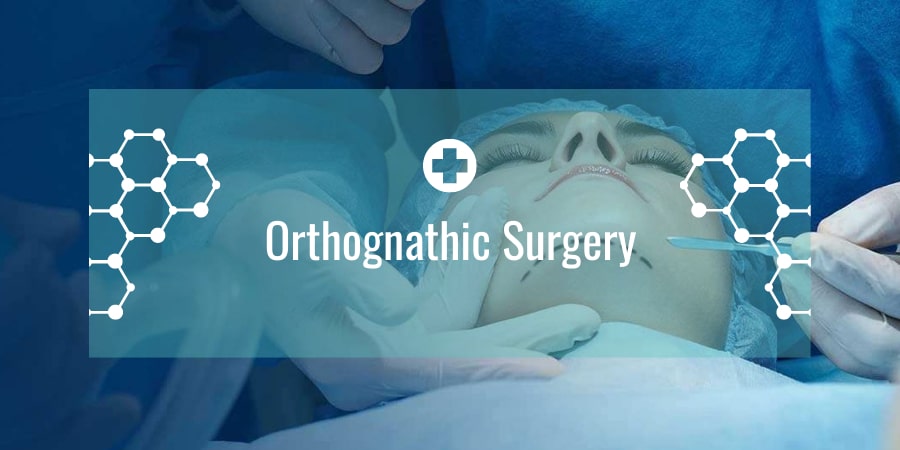The purpose of orthognathic surgery is to correct and reposition jaw misalignment or occlusion, in order to achieve facial harmony and improve functionality. Orthognathic surgery can be single or double jaw surgery depending on the extent of deformity.
Orthognathic surgery is most often required when jaws are receded, the patient has cross-bite or open-bite, or they are found in an extremely forward, backward or upper position. The procedure may correct the movement of the facial tissue of the chin, cheeks, tip of the nose and lips as well.
Once the jaws are positioned harmoniously within the facial features, the result is a beautiful, appealing profile.
Table of Contents
What is a Malocclusion?
Malocclusion can be classified in two major groups:
Skeletal – caused by a discrepancy in shape, position and/or size of one or both jaws. This type of skeletal malocclusion requires not only simple alignment of the dental arches, but also orthognathic surgery, which corrects the position of the jaws –
- Improving chewing function
- Enhances facial features
- Reducing airway related problems
Dental – as a result of an incorrect inclination or crowding of the teeth, in some cases orthodontic treatment (braces) can be sufficient to achieve stable and correct occlusion.
The most common malocclusion problems are:
- Jaw size abnormalities
- Distal bite – when teeth fall behind the upper teeth or when the facial profile is usually convex
- Mesial bite – when there is a large lower jaw, a small upper jaw.
- Occlusal depth abnormalities
- Open bite – when there is a gap between upper and lower front teeth
- Deep bite – when the overlap of the front teeth is too long.
- Jaw width abnormalities
- Cross bite – caused by a narrow upper jaw
- Scissor bite – when the upper molars are positioned outward and the lower ones inward
- Jaw asymmetry
- Vertical asymmetry – when the lower face is twisted
- Horizontal asymmetry – when the lower jaw body is longer on one side, the chin being moved toward the shorter side
- Jaw orientation abnormalities
- Gummy smile – show a fair amount of gums in the upper front teeth
- High facial angle – an extremely convex facial profile
Reasons for Orthognathic Surgery
Malocclusion problems include:
- Improper chewing of food
- Negative influence on food digestion
- Negative overall health
- Facilitates accumulation of food debris
- Aggravates maintenance of oral hygiene
- Teeth are affected by periodontal disease
- Teeth may wear out faster
- Dental prostheses lifetime is shortened
Some serious problems due to skeletal malocclusions include:
- Snoring
- Sleep apnea
- Undesirable mouth breathing
- Negative effect on speech function
- Jaw joint pain
- Negative effect on aesthetics
Orthognathic Surgery Treatment
Orthognathic surgery, which is always the combination of orthodontics and jaw surgery, involves a number of key steps:
- First consultation
- Treatment planning
- Second consultation
- Preoperative orthodontic setup (18-24 months)
- Preparation for Surgery
- Laboratory tests
- Surgical treatment
- Orthodontic surgery recovery
- Final orthodontic treatment (months)
- Plastic surgery
It takes about two years to carry out a complete orthognathic surgery treatment. The first year consists of a series of orthodontic sessions and the orthognathic surgery itself, which once started cannot be reversed.
The orthognathic surgery can be performed on the upper jaw (maxillary osteotomy), on the lower jaw (mandibular osteotomy) and on the chin as well (genioplasty).
The operation itself is normally performed inside the mouth so no scars will be visible after the procedure. The process implies making cuts into the jawbones, repositioning them and fixing the bones with plates, wires and screws. Occasionally bone must be harvested from some other parts of the body and transplanted into the jaw.
During the orthodontic surgery recovery, the final orthodontic treatment lasts for about 6 months, in which braces must be worn.
Finally, braces are removed, restorations are performed and dental implants inserted if necessary.
Orthognathic surgery recovery time depends on the type of procedure the patient has undergone, but it typically takes 3-6 weeks.
Orthognathic Surgery Cost
Depending on what exactly the patient needs and where the orthognathic surgery procedure takes place, jaw surgery can range between $2,500 and $5,500.
Orthognathic surgery cost for double jaw surgery is approximately $5,000, whereas orthognathic surgery cost for single jaw can be around $3,000.
